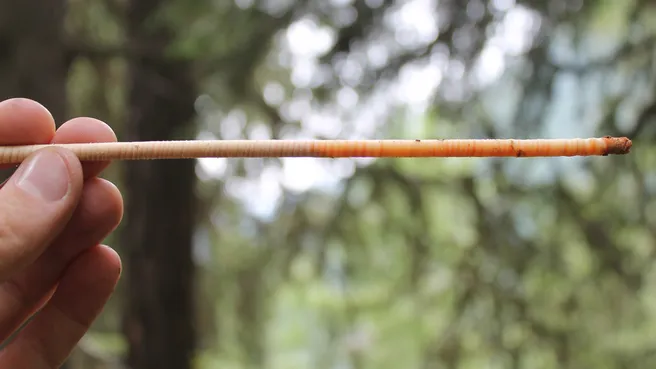His work requires an interdisciplinary approach, drawing on forest ecology, forestry, dendrochronology, forest dynamics, wood science, and ecophysiology. Dendrochronology, the science of dating trees by examining their growth rings, provides valuable information about tree age and past environmental conditions, while ecophysiology combines ecology and physiology to study how environmental factors affect an organism’s growth, reproduction, survival, and behavior.
The insights gained by Professor Peters and his team are essential for informed forest management decisions and implementing conservation actions to enhance forest resilience to climate change.
What fascinates Richard L. Peters in particular about his field?
“I am deeply fascinated by the intricate relationships between forests and the Earth's climate system. Although trees may seem like static elements within a forest, their subtle movements are significantly influenced by the environment. These tiny movements, particularly in their stems, can reveal a wealth of information, such as whether a tree is experiencing drought stress or is capable of producing wood. The latter is especially important because wood is one of the most versatile raw materials available to humanity,” Professor Peters shares.
His research focuses on “collecting and analyzing stem shrinkage and swelling signals at the micrometer level using cutting-edge sensor technologies. This data provides unique insights into the drought resilience of different tree species and offers new perspectives on growth mechanisms. These insights are crucial for predicting how trees will grow in the face of climate change.”
“Additionally, recent shifts in climate have raised many compelling questions about the future of wood formation, or 'xylogenesis,' in our forests,” he explains. “How is wood formation regulated by climate? How will recent drought events impact the mechanisms driving tree growth? And what forest management practices can effectively mitigate the effects of climate change on forest productivity and tree survival? These questions are at the heart of my research and drive my passion for understanding and preserving our forests.”
What is the new Professor looking forward to in his work at the TUM Campus in Freising?
Richard L. Peters studied biology at the University of Utrecht. “After earning my PhD with honors from the Swiss Federal Institute for Forest, Snow, and Landscape Research (WSL) and completing three years of postdoctoral research at institutions such as Ghent University, I took on the role of scientific coordinator for the Swiss Canopy Crane II research infrastructure at the University of Basel, where I focused on studying and teaching species-specific drought responses and acclimation,” he explains.
In 2024, he joined the TUM School of Life Sciences as an Associate Professor, where he says he is “particularly excited to apply my expertise in tree ecophysiology to inform and improve forest management decisions. At the TUM Campus in Freising, I am eager to engage in multidisciplinary research and teaching. Collaborating with students and colleagues, we will explore how trees grow and adapt to changing environmental conditions. By integrating forest inventory data—gathered in close collaboration with the Bavarian State Institute of Forestry—tree-ring analyses, and advanced mechanistic modeling, our goal is to predict how forests will respond to climate change and various management practices. Additionally, I am passionate about developing novel technologies to enhance forest monitoring practices, including creating state-of-the-art sensors that function like 'smart watches for trees,' providing real-time data on tree health and informing more effective forest management strategies.”

